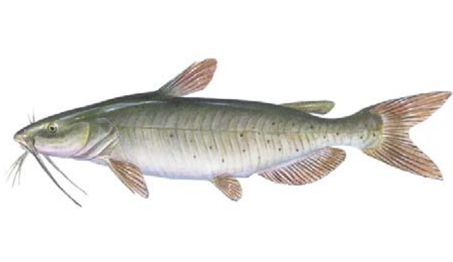Common Names: channel catfish, channel cat, spotted catfish
Habitat
Channel catfish are found throughout southern and central Ontario, primarily in the lower Great Lakes and some of the larger rivers. Channel catfish prefer cooler deeper water with sand, gravel or rubble bottoms. They are often found in areas of rivers with high current.
Spawning Patterns
Spawning occurs in late spring or early summer. Fish may move into rivers to spawn where they are available. They spawn in secluded areas such as undercut banks, under logs or in spaces within rock piles. Eggs hatch in 5 – 10 days.
Diet
Channel catfish feed both at night and during the day. Their diet includes aquatic insects, crayfish, algae, as well as fish.
Age and Size
In Ontario, channel catfish are relatively slow growing and can be very long lived. Fish have been reported up to 40 years of age! In the St. Lawrence/Ottawa River area, a 12” (30 cm) channel cat is around 7 years old, while a 22” (56 cm) fish weighing about 5 lbs may be 20 years old or more.
Fishing Tips
Channel catfish are becoming increasingly popular among Ontario anglers, because of their large size and strong fighting ability. Channel catfish are caught by fishing on the bottom, often in areas with some current. Baits include balls of nightcrawlers, large minnows (dead), or various prepared baits.
Fish illustration ©CURTIS ATWATER (www.natureartists.com/atwaterc.htm)










